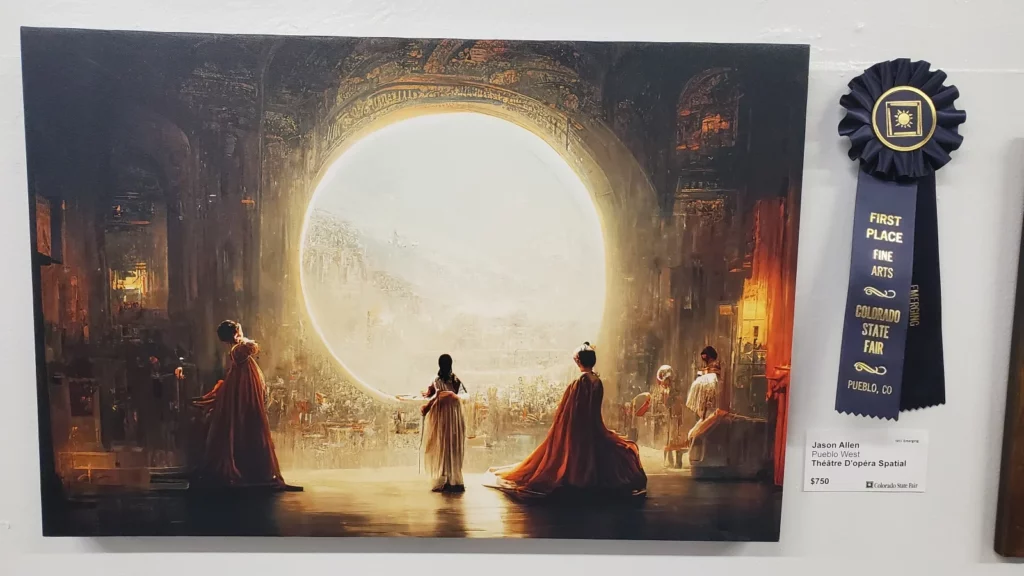
It’s intriguing, it’s stunning, and it tells a hundred stories like a veritable space opera. This digital painting won first place at this year’s Colorado State Fair’s fine art competition for digital arts, which sounds well-deserved were it not for a peculiar distinction: it was generated by an AI using a carefully crafted prompt.
The announcement immediately ignited a lively debate online as many artists decried the decision to award machine-generated art. Some found the decision uninspired and tasteless, while others were just scared of losing their jobs as they found AI-generated artworks scarily effective.
The award, which includes a $300 cash prize, was won by Jason Allen. While other candidates for the award used software like Photoshop and Illustrator to create original digital art by hand or alter photographs, Allen used an AI called Midjourney which can generate artworks or just about any kind of synthetic image from a mere line of text. The AI-generated artwork, which Allen calls “Théâtre D’opéra Spatial,” depicts a bizarre but intriguing scene from the distant future or some other world in which human figures are in awe as they stare into a huge circular viewport into a sun-drenched landscape reminiscent of Frank Herbert’s Dune.
It looks pretty sweet, which is what the competition’s judges must have thought too. Other artists, however, did not share this sentiment. In fact, many were angry and took to Twitter to vent their frustration. “We’re watching the death of artistry unfold before our eyes,” said one Twitter user dramatically.
“AI cannot create art, because anything generated from an AI is entirely devoid of messages, themes, and meaning. There is no intentional conveyance on the part of the “artist” if the said artist isn’t actively thinking about the message of their work. Which I doubt the AI does,” wrote another.
“I don’t understand how people would be excited about this. It seems to me if you’re a creator using these, the best you can do is enter prompts, and then curate what you think looks best. How does that possibly fulfill any creative desire?” added another user on Twitter.
Allen expected this entry to be controversial. He defended himself during a live chat on the official Midjourney Discord server, arguing that “people on Twitter who are against AI-generated art are the first ones to throw the human under the bus by discrediting the human element! Does this seem hypocritical to you guys?”
Allen added that he spent hours distilling hundreds of prompts into the perfect line of text that prompted Midjourney to generate its masterpiece. Sure, Midjourney applied all the brush strokes, but it was Allen who direct it all, and as such the human contribution shouldn’t be discounted, he says. The generated image was then enhanced through Photoshop and upscaled with Gigapixel. The AI-generated artwork is now listed on sale for $750.
But while Allen’s contribution was basically the ‘idea’ behind the artwork, some would argue that a lot of people have ideas, but you still need to know how to draw in order to call yourself an artist.
Regardless of which side of the debate you are on, AI-generated art seems here to stay, part of a wider movement known as “generative art”. The field has not only begun to attract increasingly more attention, but also impressive price tags at art auctions. US artist and programmer Robbie Barrat sold a work called “Nude Portrait#7Frame#64” at Sotheby’s in March for $821,000. Four years prior, French collective Obvious sold an AI-generated artwork at Christie’s titled “Edmond de Belamy” — largely based on Barrat’s code — for $432,500.


